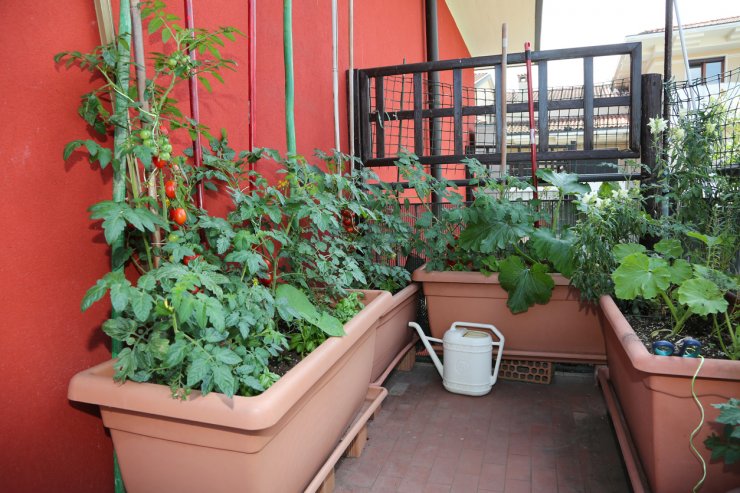
I love growing vegetables in containers. Don’t get me wrong; I couldn’t be happier to have the space to grow a big garden in my backyard, but I’ve always loved having a few or more containers full of vegetables on the porch or decorating the front steps. Flowers are nice, but I’ll take a planter full of rosemary any day.
But growing vegetables in containers isn’t just about decorating. Container gardening is a great way to grow veggies if you’re short on space. If you live in an apartment or only have a small balcony, you can still enjoy heirloom tomatoes, fresh greens, and crunchy cucumbers.
Gardening always comes with a learning curve, though. Container gardening is no different. Here are some of the mistakes I (and many others) have made, along with ideas on how you can avoid those same mistakes.
Discover 7 top tips for growing, harvesting, and enjoying tomatoes from your home garden—when you access the FREE guide The Best Way to Grow Tomatoes, right now!
The 5 most common mistakes you’ll make when you’re growing vegetables in containers
1. Too many plants in one container. This is one of those mistakes that’s so easy to make. That five-gallon container looks humongous when there’s only one little tomato seedling in there. It sure seems like there’s plenty of room for two or three tomato plants. Alas, as they grow, and the root systems develop, they end up competing with each other for space and nutrients. The solutions? Know how much space your vegetables need and don’t plant too many in one container.
2. No drainage. Unlike a raised bed or in-ground garden, excess water won’t go anywhere in a container. Unless you have drainage holes in your containers, water just accumulates and can either drown the roots or create an environment that’s ideal for mold and mildew to develop. While most store-bought containers have drainage, it’s always a good idea to check. If you’re going the creative route and using coffee cans or glass jars, make sure you either make a hole in the bottom, or include enough space for water to drain.
3. Not enough water. The water issue could be one of the biggest for gardeners growing vegetables in containers. The simple fact is that water evaporates much more quickly from soil in containers. And some popular containers, like terra cotta, absorb water quickly. Of course, this is easy to remedy. Plan to water your container garden more frequently. An easy way to determine if your plants need water is to dig your finger into the soil about an inch. If the soil is dry, you need to water your plants.
4. Mixing bad companion plants. Here’s a variation on the “too many plants in one container” issue. Plenty of plants go well together–tomatoes and basil, radishes and beets–but other plants? Not so much. Onions and peas or cucumbers and potatoes, as two examples, need to be kept apart.
5. Soil quality. Soil quality is always a factor in gardening, but it’s especially important if you’re growing vegetables in containers. In the ground, there is some possibility that plant roots can stretch out to find the nutrients they need. Clearly, they can’t do that in a container. The easiest solution here is to buy soil that’s specifically formulated for container gardening.
Gardening will always have challenges, no matter whether you’re growing your veggies on a balcony or on an acre of prime land. But the rewards are always tasty!
Discover 7 top tips for growing, harvesting, and enjoying tomatoes from your home garden—when you access the FREE guide The Best Way to Grow Tomatoes, right now!





My garden is of nothing but containers about 20 of different sizes and shapes. I have 6 5 gallon buckets with my peppers, rectangular storage containers are growing my herbs and various 24 inch containers fir tomatoes.
I grow my entire garden in containers. I use only containers with reservoirs to mitigate the watering problem. I drill holes above the reservoir level if there aren’t any. I grow only one crop in a container. and I change out the top 6 inches of soil every year. I don’t have any problems.
I have two very large pots at the end of a walkway with an arch in them. My blackberries and raspberries are trained above (great space saver and good shade in summer) and provide a nice crop of berries. A little hard to reach to pick the berries at the top.
Hi, Amanda,
I very much enjoy growing bush beans in 5-gallon buckets when I’m full in my main beds. They do VERY WELL for me. I can usually get 4 plants per pot.